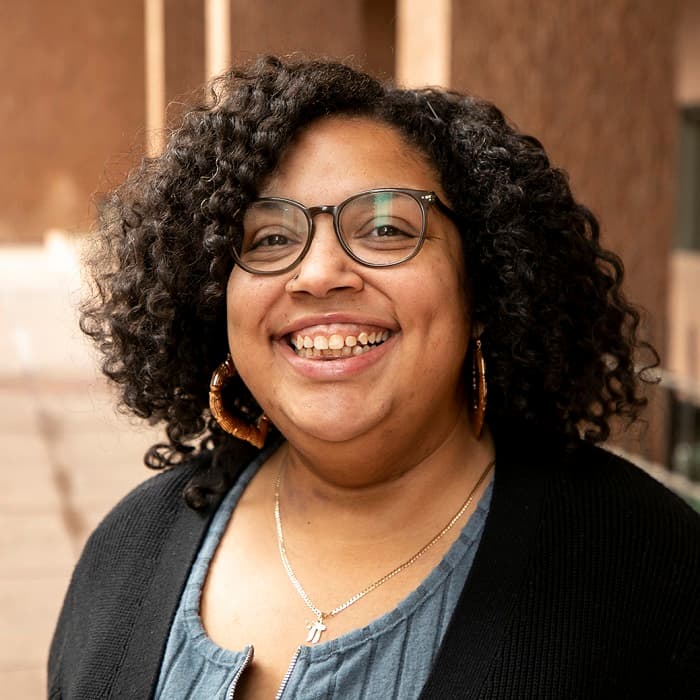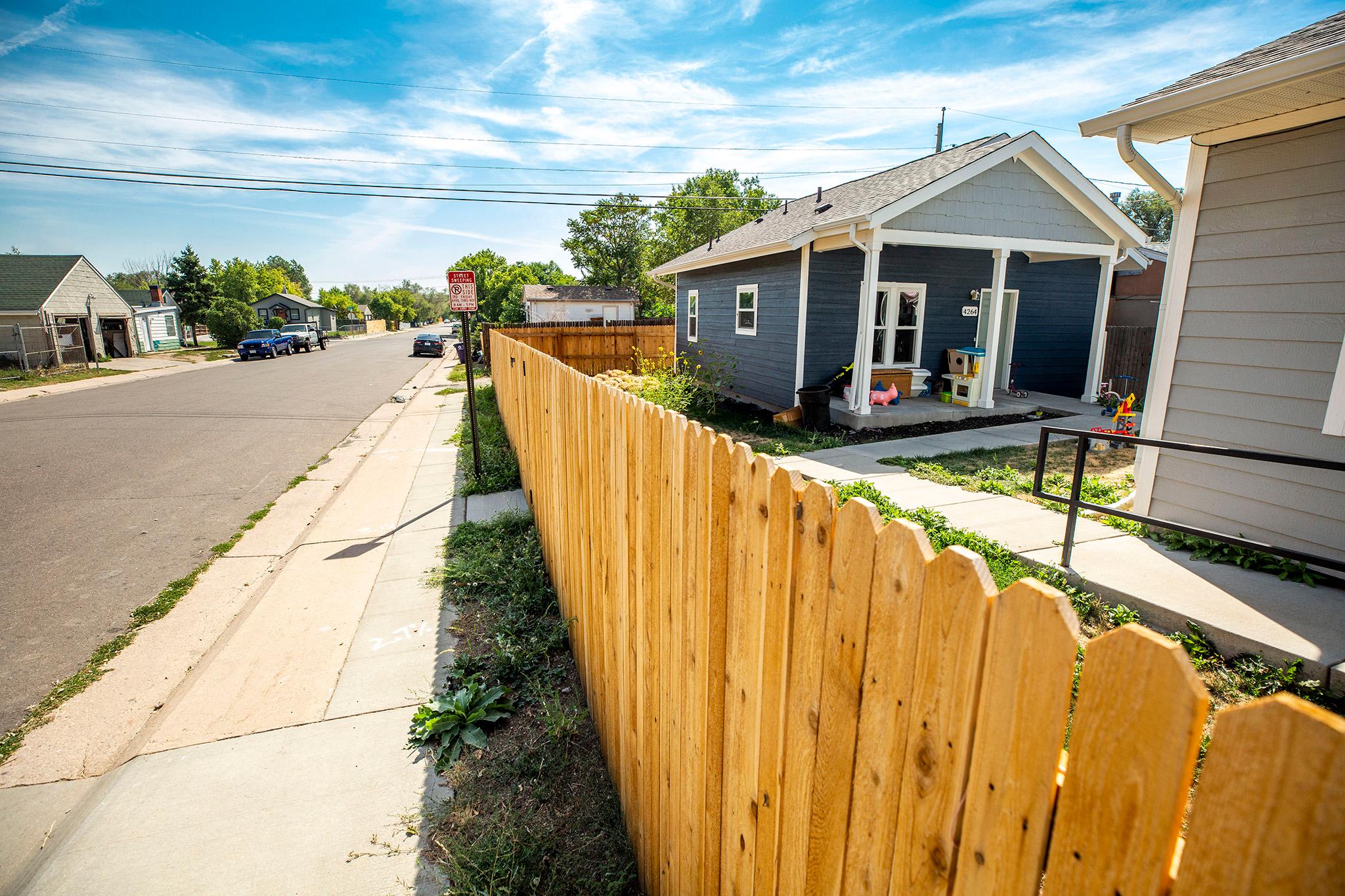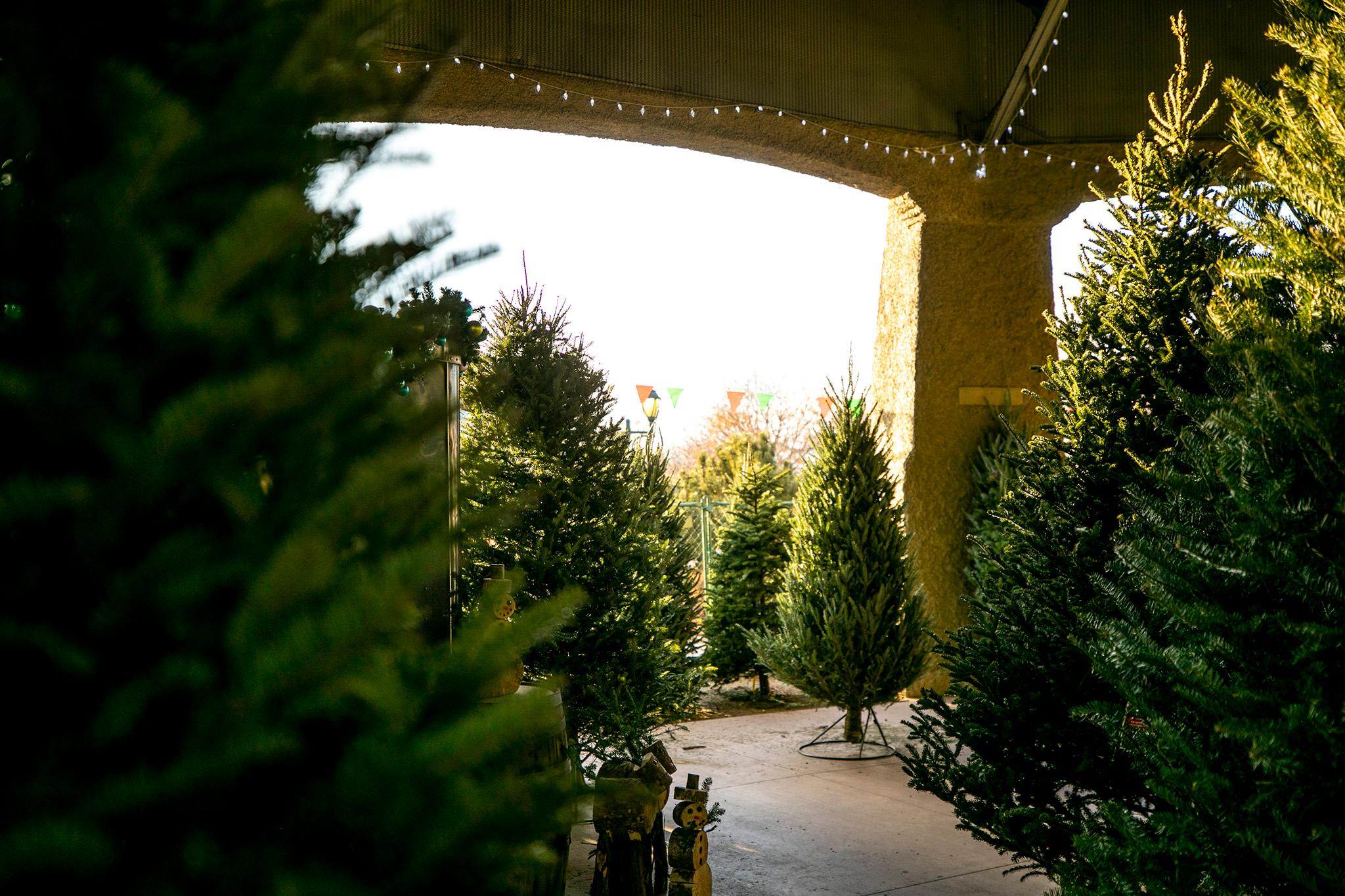It just got a little bit easier to build accessory dwelling units, or ADUs, in the Regis neighborhood.
On Monday, Denver City Council approved a neighborhood rezoning change that allows residents to construct ADUs without applying for an individual rezoning permit.
Regis is Councilmember Amanda Sandoval's third neighborhood to receive the blanket ADU rezoning. District 1's Chaffee Park was the first neighborhood to receive the rezoning, followed by Sloan's Lake. The rezoning will affect 1,025 parcels.
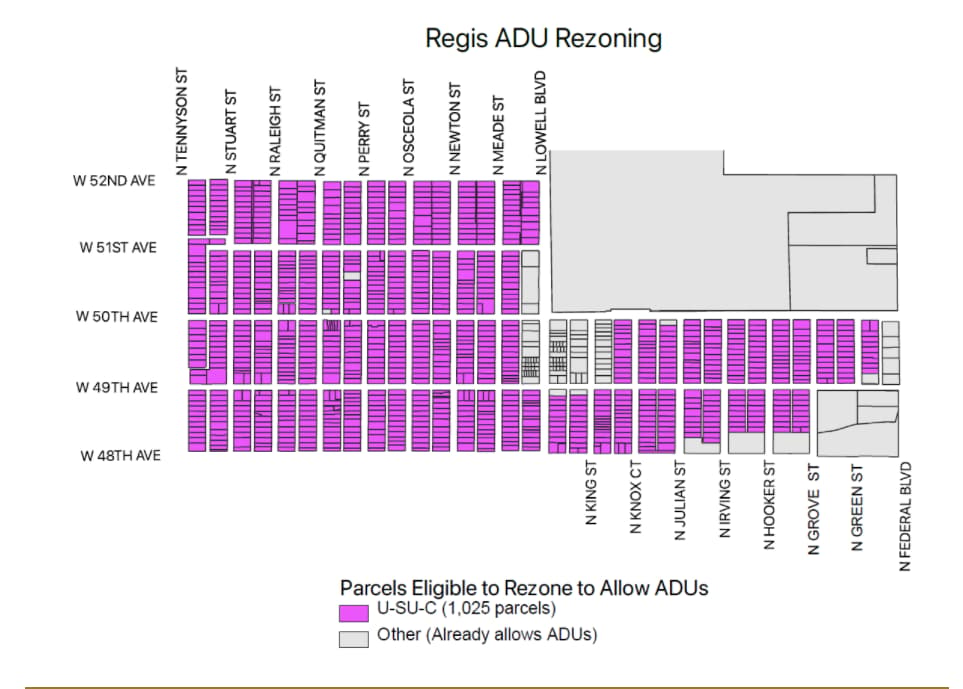
From November 2021 through February, Sandoval hosted two virtual meetings and surveyed residents regarding the proposed zoning change in Regis. According to her office, they collected 292 responses, and 82.9% of respondents supported the change. About 11.6% were opposed and 5.5% were undecided.
Several residents spoke during the council meeting in support of the rezoning, stating ADUs will allow more people to stay in the neighborhood and would provide additional housing for the city overall.
West Highland may be Sandoval's fourth neighborhood to be rezoned. She submitted an application in May. After surveying the neighborhood, 584 responses were received and 71.9%, or 420, said yes to the zoning change. About 131 respondents disagreed, and 33 were undecided.
After going through committee, a final council hearing on the West Highland rezoning should be in September.
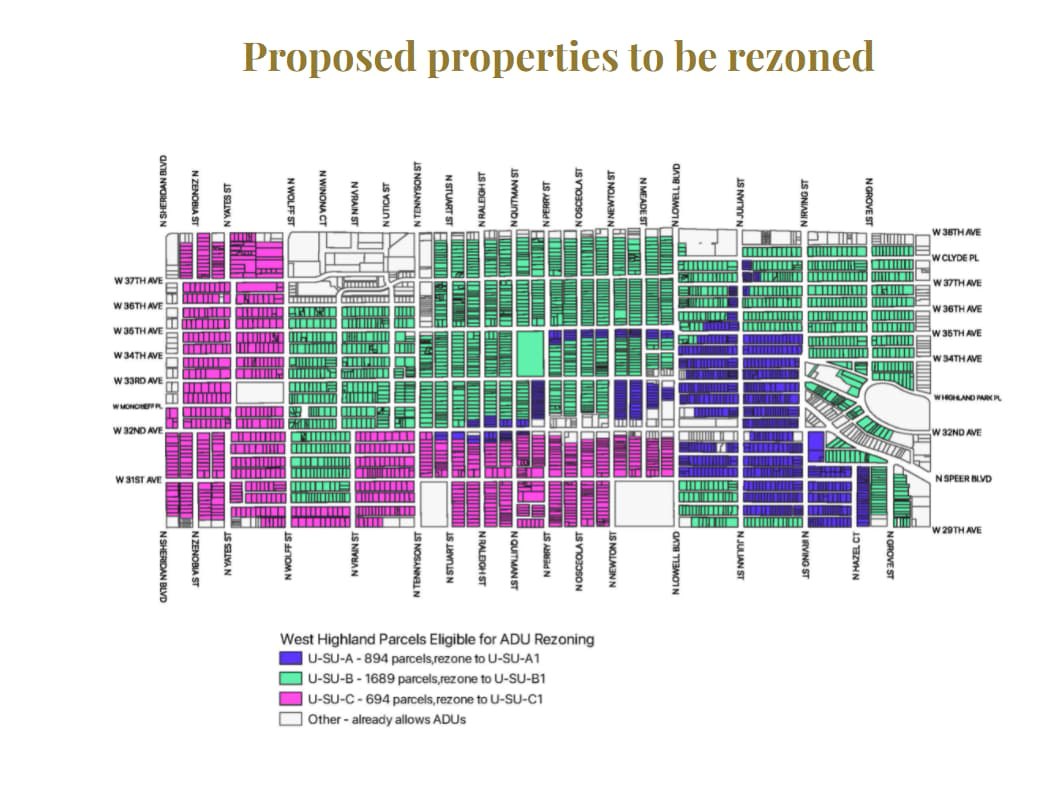
East Colfax, Villa Park, Barnum, and Barnum West have also been rezoned for ADUs.
The city views ADUs as one solution to the housing crisis because they help increase density and stop displacement. ADUs can provide additional space for families looking to house relatives, or homeowners can rent out the space for additional income both long and short term. Construction costs and overall process may deter homeowners, but fully rezoning neighborhoods eliminates a tedious and costly step in the already sometimes long and complicated ADU construction process.
An ADU community advisory committee and project team was created by the city's planning department to work on streamlining the process and reducing the barriers to building ADUs.
The committee has so far identified six main issues in the ADU construction process: minimum lot size, height in stories, building coverage exemption, bulk plane height, re-use of existing structures and setbacks. Requirements such as bulk plane height and height in stories can complicate designs making ADUs even costlier. Construction requirements also differ from neighborhood to neighborhood and from structure to structure. Creating uniform requirements could lessen costs and make ADUs accessible to all.
The next committee meeting is tentatively scheduled for August 4.
Clarification: This article was updated to clarify that while residents don't have to apply for individual ADU rezoning permits, other permits are still required.
